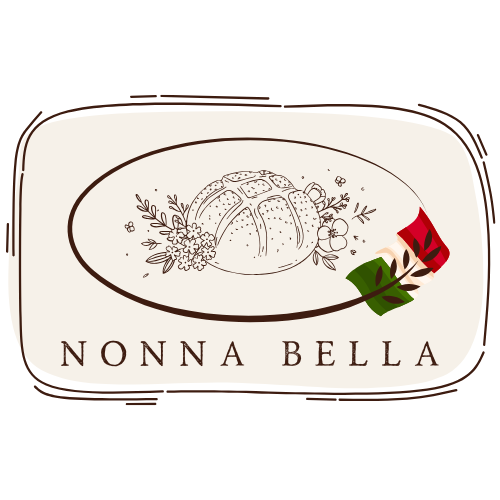
How to Bake Sourdough Bread: A Step-by-Step Tutorial for Beginners
Welcome to a world where rustic, chewy, and flavorful bread takes center stage! Sourdough bread has enchanted bakers and bread enthusiasts worldwide. Its unique taste and texture come from a magical process of wild yeast fermentation. Whether you’re intrigued by the benefits of sourdough fermentation or captivated by the science behind it, baking your first loaf of sourdough is a rewarding experience. This comprehensive guide will walk you through how to bake sourdough bread from scratch, including essential sourdough baking tips, troubleshooting suggestions, and everything you need to embark on this delicious journey.
Why Sourdough?
Before diving into the sourdough bread recipe, let's address why sourdough stands apart from regular bread.
Sourdough vs Regular Bread
Sourdough uses a natural leavening process involving wild yeast and lactic acid bacteria found in a sourdough starter. This process not only imparts a unique tangy flavor but can also be easier to digest and more beneficial for those monitoring their blood sugar levels, making sourdough a good option for diabetics. Commercially produced bread, on the other hand, uses store-bought yeast, which speeds up the fermentation but doesn’t offer the same depth of flavor or nutritional benefits.
Getting Started: Essential Tools and Ingredients
What Tools Do I Need to Make Sourdough Bread?
- A Dutch Oven: Elevate your bread-baking game with the Le Creuset Dutch Oven. Its heat-retaining properties create an optimal baking environment for sourdough.
- Danish Dough Whisk: This Artisan Blender is perfect for mixing bread dough by hand, ensuring even hydration and a smooth texture.
- Reusable Bread Sling: Utilizing a Silicone Bread Sling makes transferring your dough into and out of a hot Dutch oven effortless and safe.
- Baking Kit: Consider the Professional Baking Tools Kit for a complete setup including a sourdough starter jar, pastry mat, scraper, and bread slicing knife.
Ingredients
- Sourdough Starter: Integral to sourdough bread, your starter is the engine of wild yeast fermentation. If you're starting from scratch or want a heritage culture, check out the Nonna Bella Dehydrated Sourdough Starter.
- Flour: Use unbleached all-purpose or bread flour.
- Water: Preferably filtered, to avoid chlorine which can impede fermentation.
- Salt: Not only for taste but also to strengthen the dough structure.
Step-by-Step Sourdough Bread Recipe
Step 1: How to Feed Your Sourdough Starter
Sourdough Starter Feeding Schedule:
- Twice a Day: For a lively starter, feed every 12 hours.
- Once a Day: If you're planning to bake less frequently.
How to Feed Sourdough Starter:
- Discard half of your starter.
- Add equal parts water and flour by weight. Stir until smooth.
- Let sit at room temperature until bubbly and active.
Learn more about sourdough starter feeding and maintenance here.
Step 2: Make the Dough
- Mix 100g of active starter, 350g water, 500g flour, and 10g salt using your Danish Dough Whisk.
- Autolyse: Let the mixture rest for 30 minutes to 1 hour. This allows the flour to fully absorb the water, enhancing gluten formation.
- Folding: Perform a series of stretch and folds every 30 minutes over a 2-hour period.
Step 3: Bulk Fermentation
- Allow the dough to sit at room temperature until it has expanded by about 50% to 100%. This can take 3 to 6 hours depending on room temperature.
- Sourdough Fermentation: The yeast and bacteria will create the flavor and structure during this time.
Step 4: Shape the Dough
- Lightly flour your work surface and gently shape your dough.
- How to Shape Sourdough Bread: Form a round (boule) or an oblong (batard) by tucking the edges under and using your hands to create tension on the surface.
Step 5: Proofing
- Place your shaped dough into a floured proofing basket.
- Cold Retardation: Optionally, refrigerate overnight for improved flavor and structure.
Step 6: Scoring and Baking
- Preheat your oven with the Dutch oven inside to 475°F (245°C).
- Score the top of your bread with a sharp bread knife or razor blade. For best sourdough scoring techniques, aim for deep cuts to allow the dough to expand properly.
- Carefully transfer the dough using a bread sling into the hot Dutch oven.
- Bake covered for 20-25 minutes, then remove the lid and bake for an additional 15-20 minutes or until you achieve a crispy sourdough crust.
Troubleshooting and Tips
Sourdough Bread Troubleshooting
- Dense Loaf: If your bread lacks volume, check if your starter is active.
- Flat Loaf: Could be due to over-proofing or insufficient shaping tension.
- Too Tangy: Opting for a shorter ferment time or adjusting the starter feeding schedule may reduce sourness.
Sourdough Starter Troubleshooting
- Inactive Starter: Try using warmer water or feeding your starter more frequently.
Tips for Success
- Be patient with the process. Sourdough baking aligns with the pace of nature, not the speed of modern life.
Visit ItalianSourdough.com for more resources and products to enhance your baking.
Delicious Variations
- Sourdough Pizza Dough: Roll into thin crusts for an artisanal twist on pizza night.
- Sourdough Bagels: Use the same fermentation timeline to create chewy, flavorful bagels.
- Sourdough Discard Recipes: Creative uses for excess starter include pancakes, muffins, and crackers.
Concluding Thoughts
Embarking on your sourdough journey can reshape your understanding of bread—and, perhaps, your life in the kitchen. Embrace the process, learn from each bake, and enjoy the artisan bread you craft. As the culture matures, so will your skills and sourdough knowledge, leading to endless delicious possibilities in your baking adventures.
For more insights and premium sourdough products, explore ItalianSourdough.com and join the community of fermentation enthusiasts. Happy baking!
